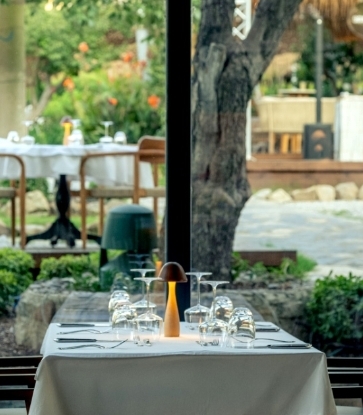Capers are always a delicious surprise in a dish. Even when they are conspicuously scattered on a plate of piccata or sprinkled on a Niçoise salad, their intense flavor, both vinegary and salty, adds an unexpected brightness to any dish's flavor profile. Though common in many dishes, particularly recipes from the Mediterranean region, capers are something of a culinary enigma, with many cooks unaware that they are adorning their food with the pickled flower buds of the caper bush.
If left on the caper bush, a trailing shrub that prospers in hot, dry environments, caper buds blossom into pink or white flowers with bright purple stamens. Before they begin to bloom, the tiny buds are harvested, sun-dried and brined in vinegar, or they can also be packed in salt to be preserved. A caper's size reveals how long it was left on the caper bush. Tiny capers are picked early, while larger capers are allowed to linger before being harvested.
Harvesting capers is no easy task, which is why they are often costly. Their small size and delicate nature require them to be hand-picked, preferably early in the day before they have an opportunity to bloom. Freshly-picked capers are extremely bitter to the point of inedibility. The pickling and drying processes soften the bitterness, giving us the tangy mix of lemon and olive that capers are known for.
Capers are sorted based on their size before they are processed and preserved. Smaller capers are both the most desirable and expensive. Larger capers are thought to be more flavorful, but they're also much more acidulous, so it's best to chop them finely before serving. With so many variations in size, capers are classified into six different categories, ranging from nonpareil, the smallest measuring 7mm, to grusas, capers that are 14mm or larger.
Once the caper bush blooms, you lose the caper and are left with a caperberry, an olive-like fruit that is also pickled or brined and used as a garnish. Caperberries have an edible seed in the center and are picked, pickled and packaged with the stem attached. Capers are typically more desirable than caperberries due in large part to their more mellow flavor.
Capers are native to the Mediterranean region and parts of Asia, where hot, arid climates offer the perfect conditions for the caper bush to thrive. They are also grown in the Middle East, Southern Europe and North Africa, with Italy, Morocco and Spain producing the most capers worldwide. Capers have been used as food for centuries, dating back to their 2000 B.C. mention in "The Epic of Gilgamesh," the ancient Mesopotamian tale of the tyrannical king Gilgamesh and his adventures as ruler of Uruk.
A staple in the Mediterranean diet, which is considered one of the healthiest in the world, capers are small but mighty from a nutritional perspective. They contain crucial vitamins and minerals—like vitamin K, calcium and magnesium—that can help lower blood pressure, fight inflammation and diabetes. They're also high in fiber, iron and antioxidants. Both ancient Romans and Egyptians use the caper bush to treat a range of illnesses, from toothaches to paralysis to fevers. Capers are high in sodium due to the brine they're packaged in, so low sodium dieters should limit their intake.
Capers are a key ingredient in Mediterranean staples like chicken piccata and Niçoise salad, and are a standard garnish on a bagel piled high with cream cheese and lox, where their zesty flavor balances the more delicate notes found in each dish. To cook with capers, consider adding them to recipes with rich flavors. Their briny essence will cut the richness of butter- or cream-heavy dishes. Rinsing capers before adding them to food will soften their flavor and lessen their vinegary taste.
Capers should be stored in the refrigerator after opening. The brine not only helps preserve their flavor, but it also keeps capers fresh. They will last for months as long as they remain submerged in the brine. Without it, they will dry out and deteriorate.
Use capers to brighten up your favorite dishes. Sprinkle them on scrambled eggs, salads or on creamy pastas for a salty kick and an added burst of flavor.

From Stalls to Stars: Street Food’s Mark on Asia’s Cuisine
MICHELIN-Starred restaurant chefs from Bangkok, Hong Kong, Kuala Lumpur, Penang and Singapore share how street food continues to define Asia’s dining identity.
Paris’ Chizuko Kimura: The First Female Sushi Chef to Earn a MICHELIN Star
At Sushi Shunei, a minimalist dinner-only Montmartre sushi bar seating just nine guests, Chef Kimura makes history. Carrying on her late husband’s dream, she embodies resilience and passion in every edomae-style dish.

Türkiye: Michelin Green Star Restaurants in Muğla, Agora Pansiyon and Mezra Yalıkavak
Türkiye’s Aegean coast, rich in natural resources, is shining with new Green Star restaurants that are setting a vibrant example. Agora Pansiyon and Mezra Yalıkavak are distinctive not only for their skillful use of local ingredients but also for their commitment to sustainability.

















